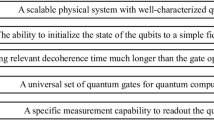Abstract
Biology in the popular mind remains tied to the doctrines of the struggle forsurvival and the survival of the fittest. Physics is linked to the heat deathof the universe – the inexorable march towards greater disorder,increasing entropy. Our field, on the other hand, focuses on orderedstructures, molecules and crystals, and their aggregates, and what holdsthem together. The philosophy of chemistry is centered on affinity,cohesion, the architecture of the very small, attraction, harmony, and, ifyou permit, beauty. Our discipline is the voice of the twenty-first century,a message, a clarion call of life, of hope. This paper addresses failures ofreductionist and deterministic claims in the face of the cussedness ofchemical facts. It will examine uncertainty principles, Edmund Whitaker'spostulates of impotence, Gerald Holton's themata, Isaiah Berlin's warning –and the wisdom of the Chinese. We can teach the world the need for humilityin the face of the wonder and mystery of our world.
Similar content being viewed by others
REFERENCES
I. Berlin. Two Concepts of Liberty. Clarendon Press, Oxford, 1958.
E. Cassirer. Determinism and Indeterminism in Modern Physics (Translated by O. T. Benfey). Yale University Press, New Haven, CT, 1956, Chapter 1.
R.G. Collingwood. An Essay on Metaphysics. Clarendon Press, Oxford, 1940.
P.A.M. Dirac. Quantum Mechanics of Many-electron Systems. Proceedings of the Royal Society (London) A123: 714–733, 1929.
P.A.M. Dirac. Cosmological Models and the Large Number Hypothesis. Proceedings of the Royal Society (London) A338: 439–446, 1974.
A.S. Eddington. The Philosophy of Physical Science. Cambridge University Press, Cambridge, 1939, pp. 59, 170ff; Fundamental Theory. Cambridge University Press, Cambridge, 1946.
L. Guterman. I React, Therefore I Am. New Scientist: 34–37, 21 November 1998.
D. Hartree. The Calculation of Atomic Structures. JohnWiley & Sons, New York, NY, 1957, pp. 16–17.
G. Holton. Thematic Origins of Scientific Thought. Harvard University Press, Cambridge, MA, 1973, Chapter 1, esp. p. 29. The yin-yang symbol on Niels Bohr's shield is on p. 123.
M. Ignatieff. Isaiah Berlin. Metropolitan Books, New York, NY, 1998.
W.B. Jensen. Logic, History, and the Chemistry Textbook: I. Does Chemistry Have a Logical Structure? Journal of Chemical Education 75: 679 ff. and fn. 1, 1988.
P.S. de Laplace. Introduction to Theorie analytique des probabilités, 1812; discussed in Cassirer (1956) p. 3.
E. Mendelsohn. The Continuous and the Discrete in the History of Science. In: O.G. Brim Jr. and J. Kagan (Eds.), Constancy and Change in Human Development. Harvard University Press, Cambridge, MA, 1980.
M.V. Orna. The Standards and the History and Nature of Science. In: Chemistry in the National Science Education Standards: A Reader and Resource Manual for High School Teachers, pp. 79–86. American Chemical Society, Washington, DC, 1997.
I. Prigogine. Personal communication of Joseph Early, based on his conversations with Prigogine. See also I. Prigogine and I. Stengers, “Enzymes postpone death and the disappearance of life.” In: Order Out of Chaos. Bantam Books, New York, NY, 1984, p. 175. J. Kovac and I. Priogoine, “Stable steady states of a system near equilibrium are states in which there is a minimum increase in entropy per unit of time.” In: L.K. James (Ed.), Nobel Laureates in Chemistry. American Chemical Society, Washington, DC, and Chemical Heritage Foundation, Philadelphia, PA, 1993, p. 593.
G.W. Wheland. Advanced Organic Chemistry. Wiley, New York, NY, 2nd edition, 1949.
E. Whittaker. Eddington's Principle. American Scientist 40: 45–60, 1952. Some of the ideas developed in this paper have appeared in the author's Dimensional Analysis of Chemical Laws and Theories. T. Benfey. Journal of Education 34: 286-288, 1957; The Concepts of Chemistry - Mechanical, Organicist, Magical, or What? Journal of Chemical Education 59: 395-398, 1982; Concepts of Time in Chemistry. Journal of Chemical Education 40: 574-577, 1963; The ‘Great Chain of Being’ and the Periodic Table. Journal of Chemical Education 42: 39-41, 1965; “The Limits of Knowledge”. Chemistry 50: 2-3, March 1977; also in modified form as “A Second Uncertainty Principle”. Guilford Review: 10-12, Spring 1975.
Author information
Authors and Affiliations
Rights and permissions
About this article
Cite this article
Benfey, T. Reflections on the Philosophy of Chemistry and a Rallying Call for Our Discipline. Foundations of Chemistry 2, 195–205 (2000). https://doi.org/10.1023/A:1009946914577
Issue Date:
DOI: https://doi.org/10.1023/A:1009946914577




